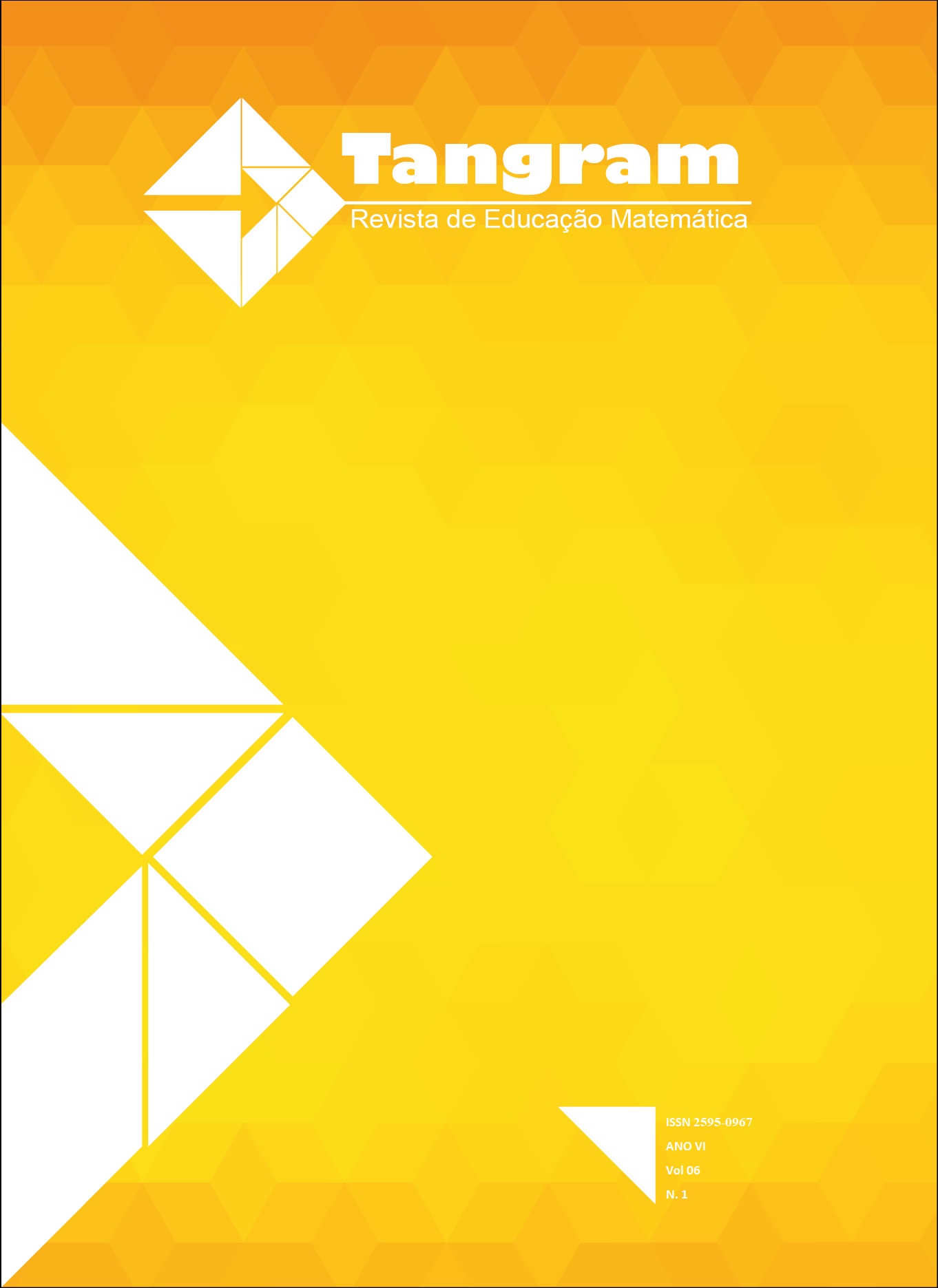O ensino de geometria e o desenvolvimento do pensamento geométrico: um mapeamento de pesquisas realizadas no estado do Espírito Santo
DOI:
https://doi.org/10.30612/tangram.v6i1.16883Palavras-chave:
Desenvolvimento do pensamento geométrico, Ensino de geometria, MapeamentoResumo
Buscou-se, neste estudo, mapear as produções que discorrem sobre o desenvolvimento do pensamento geométrico, nas teses e dissertações desenvolvidas nos programas de Pós-Graduação stricto sensu, relacionados à educação e ensino de matemática do estado do Espírito Santo (ES), nos anos de 2012 a 2022. A fundamentação teórica apoiou-se no ensino de geometria, no que concerne ao desenvolvimento do pensamento geométrico. Como embasamento metodológico, utilizou-se a investigação de natureza qualitativa do tipo estudo documental, na concepção de Fiorentini e Lorenzato (2007) e, como princípio metodológico, se caracteriza como um mapeamento na acepção de Biembengut (2007). A análise realizada colocou em evidência as fragilidades no ensino de geometria, o que sugere a necessidade de mais estudos com a abordagem do desenvolvimento do pensamento geométrico, com propostas que contribuam para a construção desse tipo de pensamento e desperte o interesse pelos processos de ensino e de aprendizagem de geometria em todos os níveis de ensino.
Downloads
Referências
Battista, M. T. (2007). The development of geometric and spatial thinking. Seco handbook of research on mathematics teaching and learning, v. 2, p. 843-908.
Biembengut, M. S. (2007). Mapeamento como princípio metodológico para a pesquisa educacional. In: Machado, N. J. Cunha, M. O. da. Linguagem, conhecimento, ação: ensaios de epistemologia e didática. Escrituras Editora, p. 289-312.
Bogdan, R. C., Biklen, S. K. (1994). Investigação qualitativa em educação. Tradução de Maria João Alvarez, Sara Bahia dos Santos e Telmo Mourinho Baptista. Porto (Portugal): Porto.
Brasil. (1998). Ministério da Educação. Parâmetros Curriculares Nacionais para o Ensino Fundamental: Terceiro e quarto ciclos do ensino fundamental. Brasília. MEC/SEF.
Brasil. (2018). Ministério da Educação. Base Nacional Comum Curricular. Brasília.
Fainguelert, E. K. (1999). Educação matemática: representação e construção em geometria. Porto Alegre: Artes Médicas Sul.
Fiorentini, D. Lorenzato, S. (2007). Investigação em educação matemática: percursos teóricos e metodológicos. (2a ed.). Campinas: Autores Associados.
Hershkowitz, R. (1994). Visualização em geometria – as duas faces da Moeda. Boletim GEPEM, Rio de Janeiro: o grupo, n. 32, ano XVIII, p. 45-61.
Leivas, J. C. P. (2009). Imaginação, Intuição e Visualização: a riqueza de possibilidades da abordagem geométrica no currículo de cursos de licenciatura de matemática. (Tese de doutorado). Universidade Federal do Paraná, Curitiba, PR, Brasil. Recuperado em 18 de agosto, 2022, de http://www.ppge.ufpr.br/teses/teses/D09_leivas.pdf.
Lorenzato, S. (1995, janeiro/junho). Por que não ensinar geometria? Educação Matemática em Revista. São Paulo, v. 4, p. 3-13.
Loureiro, C. (2009, novembro/dezembro). Geometria no Novo Programa de Matemática do Ensino Básico: Contributos para uma gestão curricular reflexiva. Educação e Matemática, Torres Vedras, 105, p. 61-66.
Mizukami, M. G. N. (1986). Ensino: as abordagens do processo. São Paulo: EPU.
Montoito, R. Leivas, J. C. P. (2012). A representação do espaço na criança, segundo Piaget: os processos mentais que a conduzem à formação da noção do espaço euclidiano. Vidya, v. 32, n. 2, p. 15.
Piaget, J. Inhelder, B. (1993). A representação do espaço na criança. Porto Alegre: Artes Médicas.
Rêgo, R. G. Rêgo, M. Vieira, K. M. (2012). Laboratório de ensino de geometria. Campinas, SP: Autores Associados.
Souza, K. (2017, março). Piaget e a construção de conceitos geométricos. Revista Temporis[ação] (ISSN 2317-5516), v. 9, n. 1, p. 247-260.
Wheeler, D. (1981). Imagem e pensamento geométrico. CIEAEM - Comtes Rendus de 1a 33e Rencontre Internationale, p. 351-353, Pallanza.
Downloads
Publicado
Como Citar
Edição
Seção
Licença

Este trabalho é licenciado sob uma licença Creative Commons Attribution-NonCommercial-ShareAlike 3.0 Unported License.
Os autores devem aceitar as normas de publicação ao submeterem a revista, bem como, concordam com os seguintes termos:
(a) O Conselho Editorial se reserva ao direito de efetuar, nos originais, alterações da Língua portuguesa para se manter o padrão culto da língua, respeitando, porém, o estilo dos autores.
(b) Autores mantém os direitos autorais e concedem à revista o direito de primeira publicação, com o trabalho simultaneamente licenciado sob a Atribuição-NãoComercial-CompartilhaIgual 3.0 Brasil (CC BY-NC-SA 3.0 BR) que permite: Compartilhar — copiar e redistribuir o material em qualquer suporte ou formato e Adaptar — remixar, transformar, e criar a partir do material. A CC BY-NC-SA 3.0 BR considera os termos seguintes:
- Atribuição — Você deve dar o crédito apropriado, prover um link para a licença e indicar se mudanças foram feitas. Você deve fazê-lo em qualquer circunstância razoável, mas de nenhuma maneira que sugira que o licenciante apoia você ou o seu uso.
- NãoComercial — Você não pode usar o material para fins comerciais.
- CompartilhaIgual — Se você remixar, transformar, ou criar a partir do material, tem de distribuir as suas contribuições sob a mesma licença que o original.
- Sem restrições adicionais — Você não pode aplicar termos jurídicos ou medidas de caráter tecnológico que restrinjam legalmente outros de fazerem algo que a licença permita.






